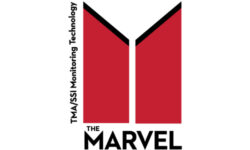Mastering the Managed Security Service Model
Margin pressures, economic conditions and customer expectations are compelling systems integrators to alter their traditional business model in order to create new streams of RMR. Learn the keys to launching a managed services platform and how to navigate common hurdles on the way to success.

Photography by Yuda Chen
The recent economic climate has encouraged many security systems integrators to focus on sustainable income, emphasizing growth in recurring monthly revenue (RMR) to provide financial stability and deepen customer relationships. As the shift to IP-based surveillance accelerates, the complexity of new systems provides an opportunity to move beyond traditional service and maintenance contracts as the sole source of RMR into the more lucrative world of managed services.
Ideal customers in this realm are typically organizations with sufficient security or liability concerns to merit paying careful attention to systems management, but may not be large enough to maintain an internal security and/or IT department. Examples include small retailers of high-value items, industrial environments where there is a high probability of accidents or theft, or organizations that require security equipment in harsh climates or hazardous areas.
The transition to a managed services model typically requires patience, as both customers and sales representatives may need time to understand the value and delivery of managed services. However, over time successful adopters of managed services typically find it to be the highest-margin offering in their portfolio. A well-executed managed services practice can deliver 20% to 35% margin for their initial few customers, and growing between 50% to 60% margins in two to three years.
Let’s take a close-up look at how integration firms can realistically make the transition to managed services. We’ll also highlight challenges that firms making the leap are likely to confront and how best to successfully overcome them.
Managed Services Model Explained
Many systems integrators still depend upon new system implementations as their primary source of revenue. This business model works, providing customers have the capital for new security projects to provide your company with the necessary revenues to retain staff and keep pace with technology changes. However, the flaws in this model during lean times are painfully obvious to integrators that have weathered the recent recession, characterized by reduced technology budgets and significantly extended sales cycles.
Consequently, security providers have concentrated on service and maintenance contracts to generate RMR. This typically includes annual hardware and software warranty contracts passed through the manufacturer, and a service component that is based upon a monthly fee. The annual value of a typical maintenance contract ranges from 10% to 15% of the cost of system implementation, depending upon the needs of the customer and the complexity of the system.
While the resulting RMR from service and maintenance contracts is helpful, it has limitations for the integrator. Hardware and software warranties passed through the integrator from the manufacturer are frequently sold at a lower margin than the original equipment. Also, the services that integrators typically provide in addition to warranties can be viewed as a commodity by the client, which can create margin pressure for professional services provided by the integrator.
The commoditization of maintenance services can be overcome by adopting successful strategies of IT value-added resellers (VARs), which are progressively moving to a managed services model to increase the value and margins of RMR. In a managed service the integrator adopts the responsibility to assure the entire system is continuously managed in order to meet the customer’s business needs, rather than to provide periodic services on a set schedule or upon customer request.
A managed services approach provides multiple benefits and allows the service provider to continuously assist the customer in assuring the overall performance of the system. Typical components of a managed service include:
Remote monitoring services that monitor all aspects of the client’s security systems, from security application errors to storage utilization to camera status
Ongoing review of key system events such as backup logs, server events, etc.
Automated alarms for critical component outages, with automatic dispatch of service personnel (rather than responding upon customer request)
Periodic performance reporting, analysis and capacity planning
Managed services enable integrators to provide value-added RMR services that are business-oriented rather than system-oriented. Again, these services provide the opportunity to demonstrate understanding and commitment to the client’s business needs, deepening the relationship and their dependency upon the provider’s expertise. Also, they enable the provider to bundle higher margin professional services to general system maintenance.
Managed services have residual benefits to the service provider as well. By understanding the customer’s ongoing business direction, service provider experts are able to anticipate future needs and recommend new solutions as they emerge.
If you enjoyed this article and want to receive more valuable industry content like this, click here to sign up for our FREE digital newsletters!

Security Is Our Business, Too
For professionals who recommend, buy and install all types of electronic security equipment, a free subscription to Commercial Integrator + Security Sales & Integration is like having a consultant on call. You’ll find an ideal balance of technology and business coverage, with installation tips and techniques for products and updates on how to add to your bottom line.
A FREE subscription to the top resource for security and integration industry will prove to be invaluable.













